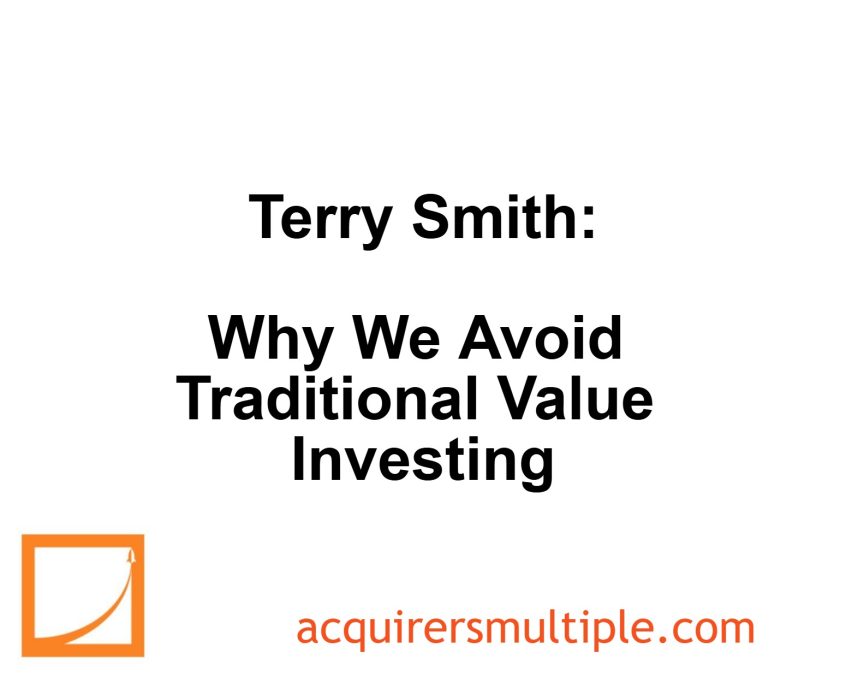In his book – Investing for Growth, Terry Smith contrasts his investment approach with traditional value investing, noting that while value investing can offer returns when stocks are undervalued, it requires active buying and selling and incurs higher transaction costs.
Smith’s strategy focuses on companies with high, predictable returns on capital that can reinvest profits to fuel growth and compound value over time.
Unlike value investors who wait for intrinsic value to be realized in the share price, Smith seeks quality businesses that compound value organically, allowing for long-term holding with minimal trading. He argues this “buy and hold” approach is ultimately more efficient and profitable.
Here’s an excerpt from the book:
Nonetheless, value investing has its merits and will surely have its day when stocks of the sort which attract value investors perform well.
However, it is not a strategy which we will be pursuing even if we could foresee it coming back into fashion, which it will at some point. The sort of stocks which trade on low enough valuations to attract value investors are unlikely to be those which we seek – businesses which can somewhat predictably produce a high return on capital employed, in cash, and can invest at least part of that cash back into the business to fund their growth and so compound in value.
Unlike our strategy – which is to seek such stocks and hold on to them, letting the returns which the company generates from this reinvestment produce good share price performance – value investing suffers from two handicaps.
One is that whilst the value investor waits for the event(s) which will crystallise a rise in the share price to the intrinsic value that has been identified, the company is unlikely to be compounding in value in the same way as the stocks we seek. In fact, it is quite likely to be destroying value. Moreover, it is a much more active strategy.
Even when the value investor succeeds in reaping gains from a rise in the share price to reflect the intrinsic value he identified, he or she needs to find a replacement value stock, and as events of the past few years have demonstrated, this is far from easy.
Moreover, this activity has a transaction cost. Our strategy has the merit that inactivity is a benefit. If we have correctly identified the good companies whose stock can compound in value, we can hope to hold them indefinitely and still derive good investment performance from them with lower transaction costs.
You can find a copy of the book here:
For all the latest news and podcasts, join our free newsletter here.
Don’t forget to check out our FREE Large Cap 1000 – Stock Screener, here at The Acquirer’s Multiple:



